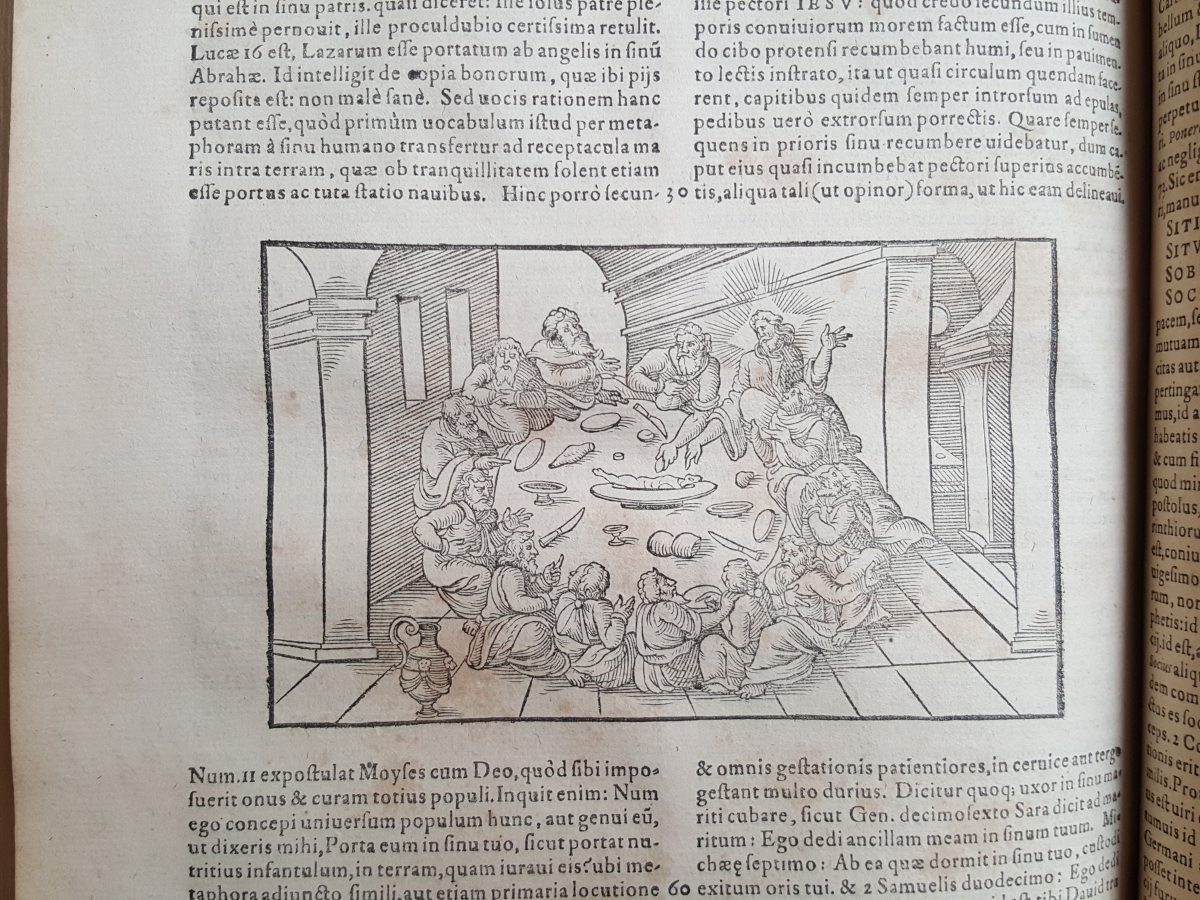Circular arguments
Clavis Scripturae Sacrae, seu, De sermone sacrarum literarum (The key to Holy Scripture, or, Of the word of holy letters), by Matthias Flacius Illyricus. Printed in Basel by Eusebius Episcopius, 1580–1581.
Lower Library, K.27.10–11

This massive handbook on the interpretation of Christian scripture was written by the theologian Matthias Flacius Illyricus (1520–1575), a second-generation follower of the church reformer Martin Luther, who believed that 'the meaning of scripture is ... so certain, accessible, and clear that scripture interprets itself' (Assertion of All the Articles, quoted by Bernhard Lohse in Martin Luther, 1986). Luther's claim was not that the text held no difficulties for the reader, but that it alone also held their solutions.
For Luther, the meaning of scripture was not to be completed from outside, whether by looking with the Roman church to its own institutional tradition and authority, or with the radical reformers such as Thomas Münzer to God's personal guidance. Instead it was to be entered and understood, the text conforming the reader to the circle in which scripture interprets scripture: 'You', Luther had earlier imagined scripture addressing the reader, 'will be changed into what I am' (First Lectures on the Psalms, quoted by Lohse).
As Alister McGrath remarks in The Intellectual Origins of the European Reformation (2004), the principle of 'scripture alone' demanded a 'reliable' programme for interpretation; yet Luther 'almost always wrote in response to very specific situations' (Lohse), and his followers inherited challenging insights and examples rather than a programme. This was one of the teaching needs Flacius attempted to meet with his Key to Holy Scripture, first published in 1567 and republished for over 150 years. It included a notable treatment of the reframed study of meaning which would come to be known as hermeneutics (the term, borrowed from Greek, was introduced in the next century).
Flacius argued that in any text, 'the individual parts ... draw their meaning from their relationship to [the] whole' (quoted by Wilhelm Dilthey in 'The Rise of Hermeneutics', Selected Works 4, 1996, the translation altered). A teacher should therefore reduce a text to its logical sum (summa) and its doctrinal target (scopus), so as to provide a guiding thread along which the student reader might safely advance and retreat in the 'labyrinth' of the real text. Philippe Büttgen and Denis Thouard suggest in their 2009 edition of the Key that these reductions serve both 'to render the text manageable' (by the student) and 'to allow the control of interpretation' (by the teacher, presumably with direct scriptural authority).
In this presentation the student receives such views of the whole from a teacher who possesses them by definition; the Key does not treat how, given that a text consists of words in order, a view of the whole is available in the first place. By dividing the labour of reading between teacher and student, Flacius barred the hermeneutic circle in which parts and whole come to be understood in mutual relation. This dialectical model was only achieved in the early nineteenth century, above all by another Protestant theologian, Friedrich Schleiermacher (see his Hermeneutics and Criticism, 1998), who further proposed that a text was itself a part of the development of the language and the development of the author – related, once more, in a circle.



![3. A section heading: 'Rules for the Understanding of Holy Letters, Drawn from [the Letters] Themselves.' A page in a 16th-century printed book, with Latin text divided by a section heading, 'Regulae Cognoscendi Sacras Literas, ex Ipsis Desumptae'.](/sites/default/files/styles/gallery/public/gallery-images/regulae.jpg?itok=FY7-FfL0)



